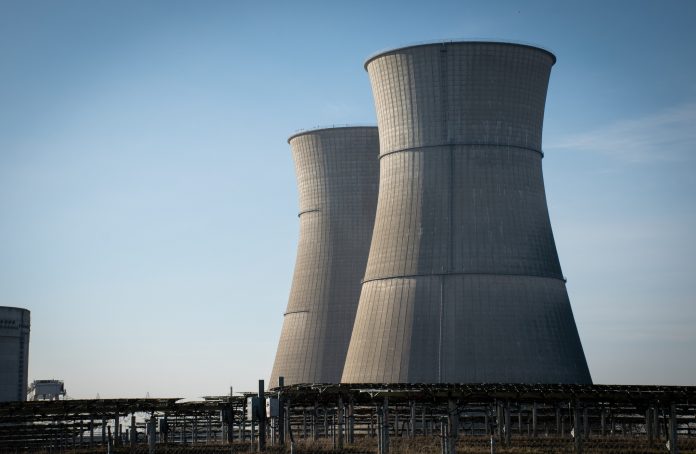Finland took a giant step toward energy independence with the startup of a new nuclear reactor.
The Oikiluoto 3 (OL3) is expected to meet 14 percent of Finland’s total electricity demand when fully operational.
OL3 will reduce the need to import natural gas and electric power from Norway, Russia, and Sweden, according to Finnish Minister of Economic Affairs Mika Lintiiä.
“When it operates at full capacity, OL3 will increase the annual domestic electricity production to nearly 80 terawatt-hours, which means that self-sufficiency will rise to more than 90 percent,” said Lintiiä.
‘Nuclear Power Is the Future’
Nuclear energy is a good investment for any nation in the world, says Kelvin Kemm, a nuclear physicist and CEO of Nuclear Africa, a project management company.
“Nuclear power is the future, providing enhanced energy security for a nation,” said Kemm. “We now have large 3,000 MW nuclear power plants available, but we also have new generations of small modular reactors that will generate 100 to 300 MW of electricity.”
The concentrated power of nuclear fuel is an advantage, says Kemm.
“Uranium produces about 3 million times more energy per kilogram than coal, meaning only a small amount of nuclear fuel is required to produce a large amount of energy,” said Kemm. “This means you can store a four- or five-year supply of fuel onsite, which by itself guarantees a significant measure of energy security.”
Clean Nuclear Energy
Finland’s four existing nuclear power plants met about 35 percent of the nation’s annual total electric power demand in 2019.
In addition to nuclear, in 2021, Finland’s electric power mix consisted of 20 percent generated by biofuels and waste, 18 percent hydro, 12 percent coal, six percent wind, and less than 0.5 percent oil and solar jointly. Imported electricity accounted for the remainder of Finland’s electric power supply.
Two-thirds of Finland’s energy imports came from Russia in 2009-2011, but the percentage has decreased considerably since completion of the Fenno-Skan 2,800 MW high-voltage, direct current link with Sweden.
Even accounting for growth in demand, the new OL3 reactor will reduce net imports of power to just a few percent by 2025.
Falling Prices?
Finnish wholesale power prices are also expected to drop to 60 euro per megawatt hour (MWh) in 2023 from a predicted average price of 70 euros/MWh in 2022.
By 2024, the wholesale price will likely fall to just 45 euros/MWh. This energy price drop is good news for energy-intensive Finnish industries, which invested heavily in large-scale energy production beginning in the 1930s, rather than relying solely on specialized utilities.
Energy-intensive companies see joint ownership of electricity production as a hedge against increasing prices and taxes.
Lower Lifecycle Costs
In 2013, Finland imposed a windfall profits tax on nuclear and hydro capacity built prior to 2004. The tax, which does not apply to wind and biomass, was instituted to generate approximately 50 million euros a year. Under the scheme, all power generating companies receive free carbon dioxide emission allowances and those not emitting CO2 can sell them.
OL3 is not subject to the windfall profits tax.
Nuclear energy opponents typically mislead the public on the actual costs of nuclear energy, even including taxes imposed on nuclear as part of its “cost,” says Kemm.
“What is important is a proper costing over a proper life cycle,” said Kemm. “Modern nuclear power is designed for a 60-year lifetime but will likely last 80 years with no trouble, two to three lifetimes for a wind or solar system.
“Nuclear power has a high upfront cost for construction but the low amount of fuel and much longer plant life, make it often cheaper than most other sources of energy,” said Kemm. “Do not be fooled by taxes on nuclear and subsidies that make wind and solar appear less expensive, taxes should not be used to manipulate science and engineering calculations.”
Efficient, Reliable Nuclear
Finland has partly relied on nuclear energy since the 1970s and unlike Germany has opted to build additional nuclear capacity.
The OL3 plant is managed by TVO, a joint venture of the Finnish utility Fortum and smaller energy and forestry firms. TVO’s OL1 and OL2 reactors began at 660 MW, but by 2010 were upgraded to 880 MW each and their planned operating lifetimes were extended to 60 years, subject to safety evaluations every decade. The OL3 is nearly twice the size of TVO’s older power plants.
In September 2018, the Finnish government renewed the operating licenses of both units for 20 years. It is considering allowing the company to increase the capacity of its older plants to 1,000 MW each.
OL3 began test production in March at just over 0.1 gigawatt, a small fraction of its capacity, with a ramp-up to full, regular electricity output planned by the end of July.
Finnish reactors are among the world’s most efficient, with an average lifetime capacity factor over 90 percent and an average capacity factor over the last decade of nearly 95 percent.
The new reactor and the recent upgrades bring Finland to nearly 90 percent reliance on non-carbon dioxide emitting energy sources—mostly nuclear and hydro.
The OL3 will not only improve Finland’s energy security, it is also the first nuclear power plant in the world to have a fully designed and operational waste management system ready at its commissioning.
Duggan Flanakin (dflanakin@gmail.com) writes from San Marcos, Texas.



























[…] post Finland Forges Nuclear Path to Energy Freedom appeared first on Heartland Daily […]